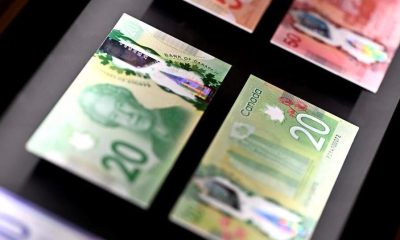Asian stockmarkets were becalmed on Wednesday as surges in oil and Chinese factory prices added to worries that a hot U.S. inflation reading could renew pressure on policymakers to lift interest rates.
U.S. crude futures rose 1% to a two-week high of $84.97 a barrel in early trade and Brent futures made a one-week top of $85.35. [O/R]
Factory gate prices in China have soared 13.5% year-on-year to October, data showed, beating forecasts and warning of pressure heading down supply chains to global consumers.
MSCI’s broadest index of Asia-Pacific shares outside Japan and Japan’s Nikkei each dropped 0.2% in and Overnight on Wall Street a long rally paused, with the Nasdaq logging its first fall in a dozen sessions. [.N]
S&P 500 futures fell 0.2% in morning trade.
U.S. data due at 1330 GMT is expected to show consumer prices galloping higher at 5.8% year-on-year and even dovish Federal Reserve officials Neel Kashkari and Mary Daly have conceded it is running hotter for longer than they expected.
“Coming from them, I would imagine that now there is officially little doubt left within the (Fed) that risks around inflation are much more elevated than previously assumed,” NatWest Markets strategists said in a note.
Longer-dated bonds had rallied on Tuesday, flattening the Treasury yield curve, as investors seem to be wagering on hikes in the next year or so squashing growth and inflation in the years beyond. [US/]
“A firm (CPI) read can add a bit more fuel to the flattening,” the NatWest analysts said. “But I would argue that at this stage, a weak CPI number wouldn’t be enough to ease markets into thinking the Fed will hold back.”
Treasuries dipped a bit in Asia hours, lifting the benchmark 10-year yield about 2 basis points to 1.4626% after it had touched a six-week low of 1.4150% overnight.
Currency markets have been fairly quiet but traders favoured safe havens on Tuesday and lifted the yen to a one-month high.
The Japanese currency held there on Wednesday at 112.84 per dollar and risk-sensitive currencies such as the Australian dollar were under pressure, with the Aussie testing support at its 50-day moving average of $0.7374. [FRX/]
“The dollar will be sensitive to moves in the 2-5 year part of the U.S. Treasury curve,” said Chris Weston, head of research at broker Pepperstone in Melbourne.
“I think we’ll need to see a (monthly U.S. CPI) print of 0.8% to see the dollar index break out of the top of the range of 94.50,” he said. The index was last at 93.997.
CLOUDS
China’s economic slowdown is also nagging on investors’ minds, especially as a credit crunch seems to be quickly spreading through the giant property industry.
Bonds in the sector had suffered a fresh pounding on Tuesday, with the sell-off dragging in even investment-grade debts.
“(The) market is now driven more by fear rather than rationale,” said analysts at J.P. Morgan. “Valuations have factored in (the) worst case scenario.”
Other clouds are also brewing, with a survey in Japan showing manufacturers’ business confidence has fallen to a fresh seven-month low and Tesla stock, a bit of a gauge of retail investors’ sentiment, turning wobbly.
The carmaker, which has been the poster-stock of equities’ thumping rally from pandemic lows, suffered its sharpest share price fall in 14 months on Tuesday as traders brace for a possible sale from company chief Elon Musk.
Gold and bitcoin have been the primary beneficiaries of the market turbulence, with gold up 3.5% in a week to $1,829 an ounce and bitcoin hovering at $67,267 after hitting a record peak of $68,564 a day ago.
(Reporting by Tom Westbrook; Editing by Michael Perry)
Related


































